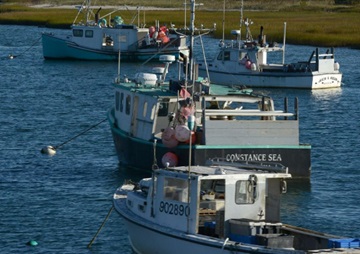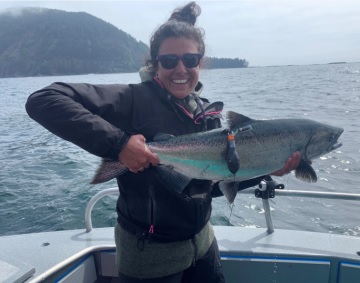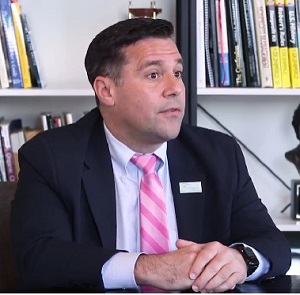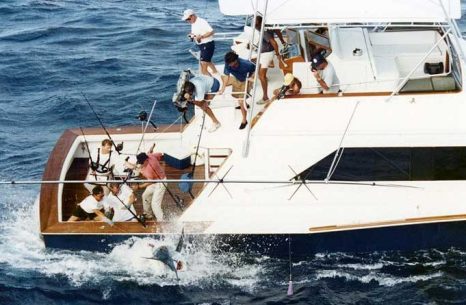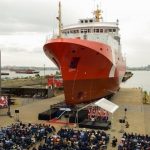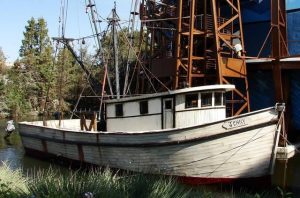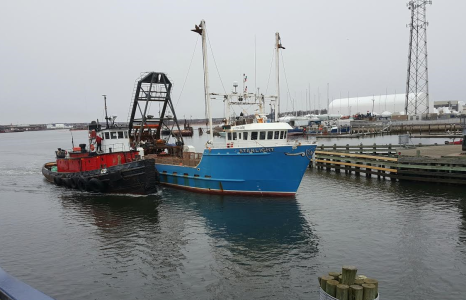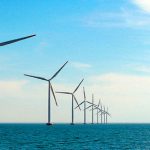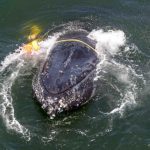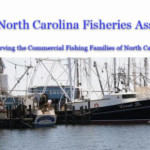Tag Archives: NOAA
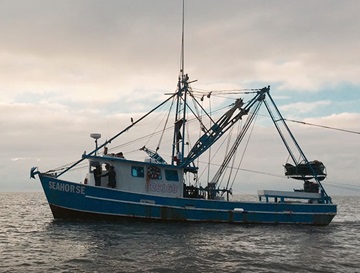
Gulf Coast wins against ‘far-left activists’ in NOAA decision, Alabama officials say
U.S. Sens. Katie Britt and Tommy Tuberville applauded the National Oceanic and Atmospheric Administration rejecting a petition to establish a mandatory 10-knot speed limit and other vessel-related mitigation measures in the Gulf of Mexico.“I was glad to see the NOAA come to their senses and reject this part of the Biden Administration’s overreaching regulatory agenda in the Gulf of Mexico,” said Tuberville (R-Auburn), who has written two letters to administration officials on the issue. “Unfortunately, we still have a long way to go. Designating a Critical Habitat for the Rice’s whale throughout this expansive area would impose undue burdens and restrictions on all vessel traffic, especially in and out of the Port of Mobile.” >>click to read<< 10:09
Delano: Biden administration won’t leave lobstermen alone
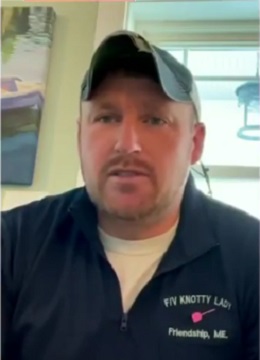 Lawmakers and a federal appeals court last year defeated a federal plan to save endangered whales by eradicating New England’s lobster industry. With those plans undone, the National Oceanic and Atmospheric Administration (NOAA) is crafting a workaround scheme to regulate lobstermen out of the fishery. Recent years have been brutal going for lobstermen, such that the survival of our trade is highly uncertain. Lobstermen are at once negotiating higher fuel costs, higher bait costs, higher shipping costs, and an agitation campaign from dark money nonprofits trained on major buyers of Maine lobster products. NOAA’s new regulatory plan is poised to decimate our inventory. >>click to read<< 09:18
Lawmakers and a federal appeals court last year defeated a federal plan to save endangered whales by eradicating New England’s lobster industry. With those plans undone, the National Oceanic and Atmospheric Administration (NOAA) is crafting a workaround scheme to regulate lobstermen out of the fishery. Recent years have been brutal going for lobstermen, such that the survival of our trade is highly uncertain. Lobstermen are at once negotiating higher fuel costs, higher bait costs, higher shipping costs, and an agitation campaign from dark money nonprofits trained on major buyers of Maine lobster products. NOAA’s new regulatory plan is poised to decimate our inventory. >>click to read<< 09:18
Biden admin’s new rule could put pinch on lobster fishermen while letting others off the hook: critics say
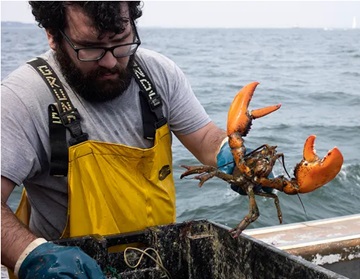 The National Oceanic and Atmospheric Administration is planning to enact a new federal rule under the Marine Mammal Protection Act – which would expand an existing restricted area off the coast of Maine where lobster fishing is already banned for three months each year. The move would cut the lobstermen’s’ business by at least 25% of the already declining industry, critics say. The plans come as an attempt to protect the endangered North Atlantic Right Whale, but a group of fishermen say the agency have no data to support the tightening restrictions. They also claim the federal agency is playing favorites by greenlighting offshore wind developments even though recent studies show can be harmful to marine life. “The federal government treats foreign offshore wind developers much better than lobstermen. The corporations have official authorization to disturb and displace marine life. Working lobstermen aren’t as lucky as our friends,” Video, >>click to read<< 07:55
The National Oceanic and Atmospheric Administration is planning to enact a new federal rule under the Marine Mammal Protection Act – which would expand an existing restricted area off the coast of Maine where lobster fishing is already banned for three months each year. The move would cut the lobstermen’s’ business by at least 25% of the already declining industry, critics say. The plans come as an attempt to protect the endangered North Atlantic Right Whale, but a group of fishermen say the agency have no data to support the tightening restrictions. They also claim the federal agency is playing favorites by greenlighting offshore wind developments even though recent studies show can be harmful to marine life. “The federal government treats foreign offshore wind developers much better than lobstermen. The corporations have official authorization to disturb and displace marine life. Working lobstermen aren’t as lucky as our friends,” Video, >>click to read<< 07:55
Public input sought on federal management of Cook Inlet salmon fishing
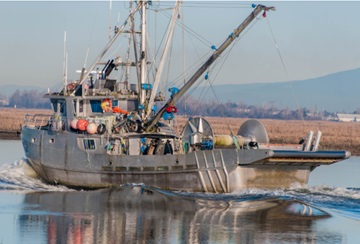 NOAA is asking for residents’ opinion on a major fishing issue. The National Oceanic and Atmospheric Administration is looking for public comments on Amendment 16 which would allow the federal government to manage commercial and recreational salmon fishing in the Cook Inlet Exclusive Economic Zone. The proposed rule would put the federal government, not the state, in charge of salmon fishing there. Alaska would continue to manage all fishing in state waters. >>click to read<< 11:31
NOAA is asking for residents’ opinion on a major fishing issue. The National Oceanic and Atmospheric Administration is looking for public comments on Amendment 16 which would allow the federal government to manage commercial and recreational salmon fishing in the Cook Inlet Exclusive Economic Zone. The proposed rule would put the federal government, not the state, in charge of salmon fishing there. Alaska would continue to manage all fishing in state waters. >>click to read<< 11:31
As the once-lucrative Bering Sea crab harvest resumes, Alaska’s fishers face challenges
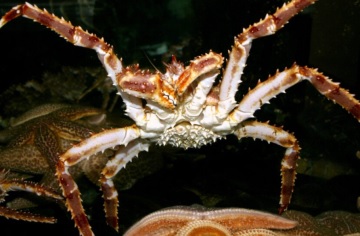 In the short term, Alaska crab fishers and the communities that depend on them will get a slight reprieve from the disastrous conditions they have endured for the past two years, with harvests for iconic red king crab to open on Sunday. In the long term, the future for Bering Sea crab and the people who depend on it is clouded by environmental and economic upheaval. The decision by the Alaska Department of Fish and Game to open harvests of Bristol Bay red king crab after an unprecedented two-year shutdown was a close call, a state biologist told industry members during a meeting on Thursday. >>click to read<< 16:08
In the short term, Alaska crab fishers and the communities that depend on them will get a slight reprieve from the disastrous conditions they have endured for the past two years, with harvests for iconic red king crab to open on Sunday. In the long term, the future for Bering Sea crab and the people who depend on it is clouded by environmental and economic upheaval. The decision by the Alaska Department of Fish and Game to open harvests of Bristol Bay red king crab after an unprecedented two-year shutdown was a close call, a state biologist told industry members during a meeting on Thursday. >>click to read<< 16:08
Small town fisherman harpooned on federal charges for catch that’s legal in other states: lawyer
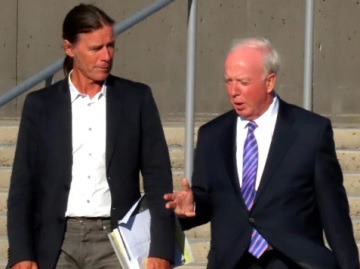 The 63-year-old captain of a Montauk, New York, fishing trawler has been convicted of federal conspiracy and fraud charges for violating local fishing rules that his lawyers say are outdated, wasteful and wouldn’t be a crime in other states. A federal jury found Christopher Winkler, who owns the 45-foot trawler named New Age that is based on Long Island’s East End, guilty of five counts last week – two each of mail fraud and obstruction of justice and one more for criminal conspiracy for an overfishing plot that racked up nearly $1 million in proceeds. The problem is, according to his defense, if Winkler had caught the fish in neighboring New Jersey, there likely wouldn’t have been a crime at all. Photos, >>click to read<< 07:53
The 63-year-old captain of a Montauk, New York, fishing trawler has been convicted of federal conspiracy and fraud charges for violating local fishing rules that his lawyers say are outdated, wasteful and wouldn’t be a crime in other states. A federal jury found Christopher Winkler, who owns the 45-foot trawler named New Age that is based on Long Island’s East End, guilty of five counts last week – two each of mail fraud and obstruction of justice and one more for criminal conspiracy for an overfishing plot that racked up nearly $1 million in proceeds. The problem is, according to his defense, if Winkler had caught the fish in neighboring New Jersey, there likely wouldn’t have been a crime at all. Photos, >>click to read<< 07:53
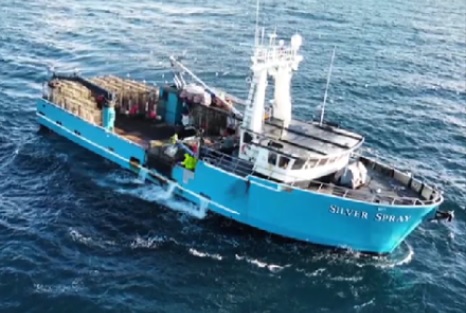
Another Bering Sea snow crab season closure brings more financial hardships for fishermen
“This is something that’s in our blood,” said Gabriel Prout, the owner and a deckhand of the 116-foot F/V Silver Spray. However, now his passion and family tradition is in jeopardy. On Oct. 6, the Alaska Department of Fish and Game announced it was closing the 2023-24 Bering Sea snow crab season for the second season in a row. “The stock is currently at all-time low levels from the survey time series,” said Ethan Nichols, the ADF&G acting area management biologist for the Bering Sea & Aleutian Islands region. “So, the threshold for opening is that total mature male biomass has to be at least 25% of long-term average. And in 2023 total mature male biomass is estimated to be between 15 and 19% of the long-term average.” The news felt like a punch to the gut for Prout, whose family relies on the season for 80 to 90% of its revenue. Video, >>click to read<< 11:40
Alaska fishermen will be allowed to harvest lucrative red king crab in the Bering Sea
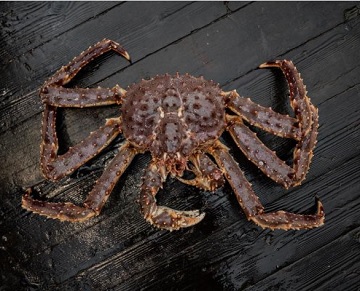 Alaska fishermen will be able to harvest red king crab for the first time in two years, offering a slight reprieve to the beleaguered fishery beset by low numbers likely exacerbated by climate change. There was no such rebound for snow crab, however, and that fishery will remain closed for a second straight year, the Alaska Department of Fish and Game announced Friday. “The Bristol Bay red king crab fishery for the prior two seasons were closed based on low abundance and particularly low abundance of mature-sized female crabs,” said Mark Stichert, the state department’s ground fish and shellfish management coordinator, “Based on survey results from this year, those numbers have improved, some signs of modest optimism in terms of improving abundance in Bristol Bay red king crab overall and that has allowed for a small but still conservative fishery for 2023 as the total population size is still quite low,” he said. >>click to read<<11:52
Alaska fishermen will be able to harvest red king crab for the first time in two years, offering a slight reprieve to the beleaguered fishery beset by low numbers likely exacerbated by climate change. There was no such rebound for snow crab, however, and that fishery will remain closed for a second straight year, the Alaska Department of Fish and Game announced Friday. “The Bristol Bay red king crab fishery for the prior two seasons were closed based on low abundance and particularly low abundance of mature-sized female crabs,” said Mark Stichert, the state department’s ground fish and shellfish management coordinator, “Based on survey results from this year, those numbers have improved, some signs of modest optimism in terms of improving abundance in Bristol Bay red king crab overall and that has allowed for a small but still conservative fishery for 2023 as the total population size is still quite low,” he said. >>click to read<<11:52
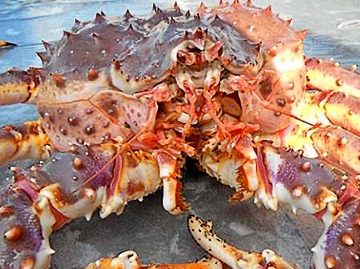
Bristol Bay red king crab fishery could return after two years on ice
The Alaska Department of Fish and Game is set to decide Friday whether or not to reopen the Bristol Bay red king crab fishery, which has been closed since 2021. Their decision will be based on recommendations from the North Pacific Fishery Management Council, which is meeting through Oct. 11 in Anchorage. During the Council’s meeting Tuesday, the Crab Plan Team presented data and analysis on Bristol Bay crab stocks from the summer trawl survey to the Scientific and Statistical Committee. Mike Litzow is a co-chair for the team and the shellfish assessment program manager and director at the National Oceanic and Atmospheric Administration’s Kodiak Lab. Litzow said while male and female crab are still at historic lows, the fishery is not at or approaching an “overfished” status. >>click to read<< 08:48
Fisherman Convicted in Plot to Sell $900,000 of Illegal Fluke and Bass
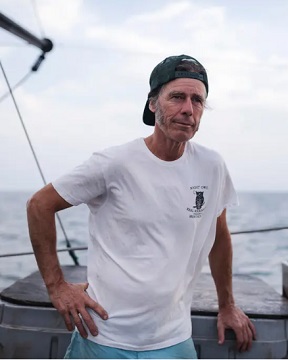 A Montauk, N.Y., fisherman accused of vastly exceeding legal limits on how much fluke he could bring ashore was convicted on all charges in a federal court in Central Islip on Wednesday. Chris Winkler, 63, captain of a 45-foot trawler called the F/V New Age, was accused of falsifying records in order to sell illegal fluke, also known as summer flounder, and black sea bass to partners from Gosman’s Dock, a mini-empire of restaurants and shops in Montauk, and dealers in the New Fulton Fish Market in the Bronx. Prosecutors said the over-quota fish was worth nearly $900,000 on the wholesale market. Two cousins from the Gosman family were initially charged — but they flipped and testified against Mr. Winkler, with one claiming he had helped the F/V New Age evade detection by the Coast Guard. Mr. Winkler could face many years in prison on five charges of conspiracy, obstruction and mail fraud, though he is unlikely to receive a lengthy sentence under federal sentencing practices. He was stoic as the verdict was read in court on Wednesday. His lawyer Richard W. Levitt vowed to appeal, and said the case was based on outdated legal limits on fluke fishing. “There is nothing at all rational about this system, but Mr. Winkler and other Long Island fishermen are easy scapegoats for this regulatory insanity,” he said. >>click to read<< 15:28
A Montauk, N.Y., fisherman accused of vastly exceeding legal limits on how much fluke he could bring ashore was convicted on all charges in a federal court in Central Islip on Wednesday. Chris Winkler, 63, captain of a 45-foot trawler called the F/V New Age, was accused of falsifying records in order to sell illegal fluke, also known as summer flounder, and black sea bass to partners from Gosman’s Dock, a mini-empire of restaurants and shops in Montauk, and dealers in the New Fulton Fish Market in the Bronx. Prosecutors said the over-quota fish was worth nearly $900,000 on the wholesale market. Two cousins from the Gosman family were initially charged — but they flipped and testified against Mr. Winkler, with one claiming he had helped the F/V New Age evade detection by the Coast Guard. Mr. Winkler could face many years in prison on five charges of conspiracy, obstruction and mail fraud, though he is unlikely to receive a lengthy sentence under federal sentencing practices. He was stoic as the verdict was read in court on Wednesday. His lawyer Richard W. Levitt vowed to appeal, and said the case was based on outdated legal limits on fluke fishing. “There is nothing at all rational about this system, but Mr. Winkler and other Long Island fishermen are easy scapegoats for this regulatory insanity,” he said. >>click to read<< 15:28
Eye-opening report by NOAA on fisheries and offshore wind farms
 Offshore wind-energy installations “wind farms” are expanding along the East Coast of the United States as a way to increase the use of renewable energy, but these installations are not without their own significant impacts on marine resources and their associated fisheries. They have innocuous-sounding names such as Revolution Wind, Sunrise Wind, Mayflower Wind Phase 1 and Park City Wind. The Bureau of Ocean Energy Management is the federal agency responsible for offshore-energy exploration and development in the US. To date, BOEM has leased approximately 1.7 million acres in the northeast and mid-Atlantic US outer continental shelf for offshore wind development, with approximately 25 active leases from Cape Cod to Cape Hatteras. And in late August, BOEM and the Department of the Interior announced that they will hold the first offshore wind-energy lease sale in the Gulf of Mexico. >>click to read<< 10:30
Offshore wind-energy installations “wind farms” are expanding along the East Coast of the United States as a way to increase the use of renewable energy, but these installations are not without their own significant impacts on marine resources and their associated fisheries. They have innocuous-sounding names such as Revolution Wind, Sunrise Wind, Mayflower Wind Phase 1 and Park City Wind. The Bureau of Ocean Energy Management is the federal agency responsible for offshore-energy exploration and development in the US. To date, BOEM has leased approximately 1.7 million acres in the northeast and mid-Atlantic US outer continental shelf for offshore wind development, with approximately 25 active leases from Cape Cod to Cape Hatteras. And in late August, BOEM and the Department of the Interior announced that they will hold the first offshore wind-energy lease sale in the Gulf of Mexico. >>click to read<< 10:30
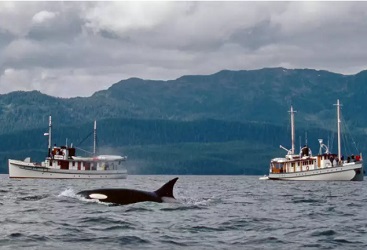
Orcas in Alaska are stealing fish right from the lines — and the new behavior seems to be killing them
Orcas in Alaska are exhibiting a “new behavior” that may be getting them in trouble, a local fisher’s association has said. They’ve been known to pluck fish off from commercial fishing gear for decades. But recently, they’ve been spotted lingering by the boats more often, appearing to “be feeding in front of the nets while fishing,” the group said. The Groundfish Forum, a Seattle-based trawl group that represents members operating 19 boats in the area, gave the warning in a statement shared by the Anchorage Daily News. “This new behavior” has never been documented and has marine scientists stumped, the Groundfish Forum said in the statement, dated September 21, >>click to read<< 18:01
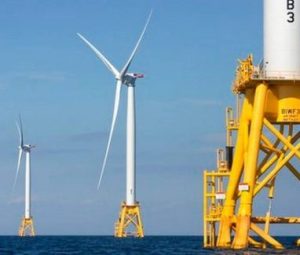
President Biden’s Offshore Wind Policies Make National Lobster Day a Day to Mourn
National Lobster Day was established by Congress to celebrate the tasty crustacean’s place in American history, culture, and commerce. Sadly, due to President Biden’s offshore wind policies, and his agencies’ blame shifting, it may soon become a day to memorialize the passing of a great industry, tradition, and a tasty meal. On December 1, President Joe Biden hosted a state dinner with French President Emmanuel Macron, at which more than 200 Maine lobsters were served. The dinner was rife with hypocrisy since earlier in his administration, Biden’s National Marine Fisheries Service, an office in the National Atmospheric and Oceanic Administration (NOAA), issued new restrictions on Maine’s lobster fishers to protect North American right whales from entanglement with lobster fishing gear. >>click to read<< 10:40
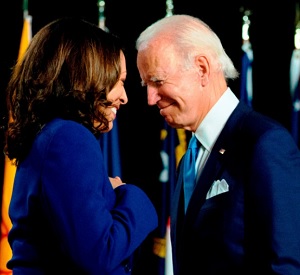
Biden-Harris Administration Announces $82 Million For Endangered North Atlantic Right Whales
Today, the Department of Commerce and NOAA announced next steps to conserve and recover endangered North Atlantic right whales with $82 million in funding from the Inflation Reduction Act — the largest climate and conservation investment in history. This announcement comes during Climate Week and is part of the $2.6 billion framework to invest in coastal resilience that NOAA announced earlier this year. North Atlantic right whales are approaching extinction with fewer than 350 individuals remaining, including fewer than 70 reproductively active females. Today’s funding provides an unprecedented opportunity to address the primary threats to the species — entanglements in fishing gear and vessel strikes — with new technologies and approaches. >>click to read<< 12:41

RI fishermen’s board resigns en masse over Biden admin-backed offshore wind farm: ‘Wholesale ocean destruction’
A plan backed by the Biden administration to OK a string of wind farms off Rhode Island has prompted every member of a fishing regulatory board in the state to resign. The entire Rhode Island Fisherman’s Advisory Board quit en masse Friday to protest the 84-turbine Sunrise Wind project after the state’s Coastal Resources Management Council approved the third offshore wind farm in two years off the Ocean State’s waters. The project falls under President Biden‘s executive order authorizing his Interior Department to double US offshore wind capacity by 2030. With the project’s approval, the Bureau of Ocean Energy Management is on track to finish reviews for 16 wind farms by 2025. But foes including the fishing board say the Sunrise plan ignores environmental regulations and anglers’ concerns Video, >>click to read<< 17:54
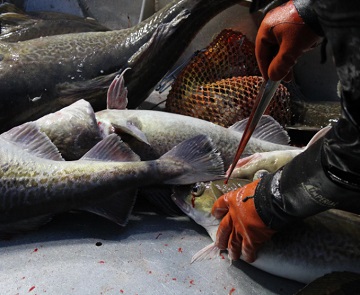
Catch Shares: Commercial trawlers to transition to quota system for Bering Sea and Aleutian Islands cod harvests
Starting in January, the fleet will fish under a “rationalization” system where each catcher vessel will have a maximum catch limit, which will be assigned through quota. The new regulations will require vessels trawling for cod in the area to form cooperatives, and quota will be administered through each co-op. Previously, the entire fishery had a total allowable catch that had to be caught within a certain amount of time. NOAA said this is the first time a catch share program has been implemented in Alaska since 2012. >>click to read<< 09:31
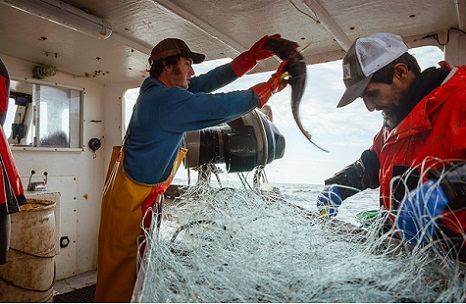
Experts fear American fishing industry, boating at risk as Biden prioritizes climate, green energy
The Biden administration has prioritized green energy at the expense of endangered whales and the U.S. fishing industry with regulation that limits both commercial fishing and recreational boating, according to experts. As they are imposing more regulations, they are also promoting offshore wind, which is actually harming commercial and recreational boating and potentially killing whales, Brady and Lapp said. “They positioned us as being these evildoers and now, 20 years later, whales are dropping dead like pigeons in Manhattan,” Brady said. “Here commercial fishermen and coastal communities are at the front line of fighting to protect the ocean itself, and we have crickets from virtually every NGO.” Video, >>click to read<< 09:09
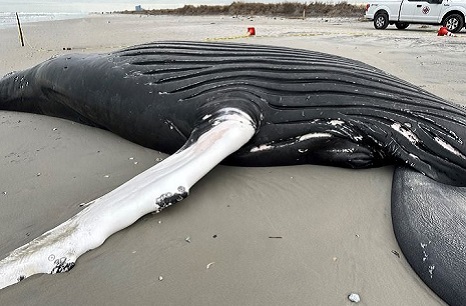
Green Groups Turn a Blind Eye to Mysterious Increase in Whale Deaths
Several environmentalist groups campaign against offshore oil and gas projects because of their ecological impacts, but those same groups appear to apply less scrutiny to the potential impacts of offshore wind developments. The Sierra Club, the League of Conservation Voters (LCV) and Greenpeace have all advocated for East Coast offshore wind projects amid the increase in whale deaths after slamming offshore oil and gas projects for their environmental impacts. The National Oceanic and Atmospheric Administration (NOAA) has declared “unusual mortality events” for humpback and North Atlantic right whales since 2016 and 2017, respectively, a timeline which generally coincides with the start of offshore wind development off of the East Coast in 2016, according to NOAA’s website. >>click to read<< 12:09
America Is Finally Spilling Its Shipwreck Secrets
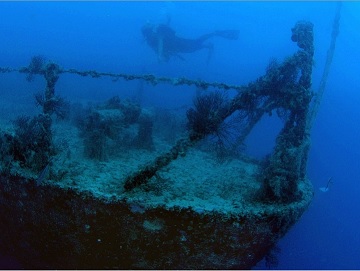 Word had gotten out about a productive patch of scallops in Stellwagen, and a commercial fishing fleet pounced. Smaller coastal boats took to the water, each one dragging a 11.5-foot-wide scallop dredge behind it. So did longer offshore vessels towing two side-by-side dredges, spanning about 30 feet. Over the coming weeks, the armada raked an area of seafloor equal to the size of Boston. Sleeping in shifts, the crews worked nonstop, shucking thousands of scallops released from the dredge in a great clattering whoosh on the wet decks. Watching this all play out, Haskell’s first concern was safety. “They were going back and forth, north and south, basically just barely missing each other,” he recalls. >click to read< 07:48
Word had gotten out about a productive patch of scallops in Stellwagen, and a commercial fishing fleet pounced. Smaller coastal boats took to the water, each one dragging a 11.5-foot-wide scallop dredge behind it. So did longer offshore vessels towing two side-by-side dredges, spanning about 30 feet. Over the coming weeks, the armada raked an area of seafloor equal to the size of Boston. Sleeping in shifts, the crews worked nonstop, shucking thousands of scallops released from the dredge in a great clattering whoosh on the wet decks. Watching this all play out, Haskell’s first concern was safety. “They were going back and forth, north and south, basically just barely missing each other,” he recalls. >click to read< 07:48
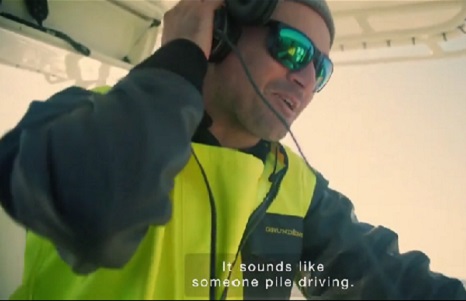
New documentary ‘proves’ building offshore wind farms does kills whales
The increase in whale, dolphin, and other cetacean deaths off the East Coast of the United States since 2016 is not due to the construction of large industrial wind turbines, U.S. government officials say. Their scientists have done the research, they say, to prove that whatever is killing the whales is completely unrelated to the wind industry. But now, a new documentary, “Thrown to the Wind,” by director and producer Jonah Markowitz, which I executive produced, proves that the US government officials have been lying. The film documents surprisingly loud, high-decibel sonar emitted by wind industry vessels when measured with state-of-the-art hydrophones. Video, >click to read<
Updated: Crew member on Alaska factory trawler dies after possible ammonia exposure
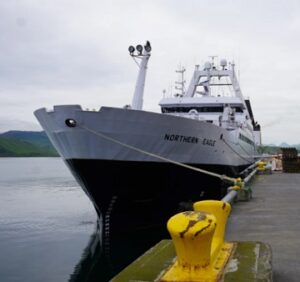 A crew member on an American Seafoods factory trawler died at sea last week, likely from an ammonia leak on board. U.S. Coast Guard Petty Officer Second Class John Highwater said that they received a satellite call from the Northern Eagle at about 4 a.m. on Aug. 18. “One of their crew members was found unresponsive in one of their engineering spaces,” Highwater said. “They believe there was an ammonia leak somewhere in the vessel that caused the person to fall unconscious.” Jeremy Baum, the Alaska Wildlife Trooper stationed in Unalaska/Dutch Harbor, identified the crew member as First Engineer David Kumah from Ghana in West Africa. >click to read< 13:09
A crew member on an American Seafoods factory trawler died at sea last week, likely from an ammonia leak on board. U.S. Coast Guard Petty Officer Second Class John Highwater said that they received a satellite call from the Northern Eagle at about 4 a.m. on Aug. 18. “One of their crew members was found unresponsive in one of their engineering spaces,” Highwater said. “They believe there was an ammonia leak somewhere in the vessel that caused the person to fall unconscious.” Jeremy Baum, the Alaska Wildlife Trooper stationed in Unalaska/Dutch Harbor, identified the crew member as First Engineer David Kumah from Ghana in West Africa. >click to read< 13:09
Fishermen indicted in federal court for alleged fraud, violation of herring laws face September trial
 A hearing is scheduled for Aug. 23 in U.S. District Court regarding trial scheduling and a motion to continue for the fishermen and seafood dealers who were indicted in 2022 with conspiracy, mail fraud, and obstruction of justice in connection with a multi-year scheme to sell unreported Atlantic herring and falsify fishing records. Jury selection is scheduled to begin on Sept. 5. The trial is anticipated for September and expected to last two weeks. According to the indictment, between June 2016 and September 2019, the owner, captains, and crew aboard the fishing vessel Western Sea sold more than 2.6 million pounds of Atlantic herring that was not reported to the National Oceanic and Atmospheric Administration (NOAA). The indictment alleges that members of the crew were paid directly by fish dealers and lobster vessel operators for the unreported herring. >click to read< 12:56
A hearing is scheduled for Aug. 23 in U.S. District Court regarding trial scheduling and a motion to continue for the fishermen and seafood dealers who were indicted in 2022 with conspiracy, mail fraud, and obstruction of justice in connection with a multi-year scheme to sell unreported Atlantic herring and falsify fishing records. Jury selection is scheduled to begin on Sept. 5. The trial is anticipated for September and expected to last two weeks. According to the indictment, between June 2016 and September 2019, the owner, captains, and crew aboard the fishing vessel Western Sea sold more than 2.6 million pounds of Atlantic herring that was not reported to the National Oceanic and Atmospheric Administration (NOAA). The indictment alleges that members of the crew were paid directly by fish dealers and lobster vessel operators for the unreported herring. >click to read< 12:56
New quota system to start for trawl harvests of cod in Bering Sea and Aleutians
 Commercial fishermen netting Pacific cod from the Bering Sea and Aleutians region will be working under new individual limits starting next year designed to ease pressure on harvests that regulators concluded were too rushed, too dangerous and too prone to accidentally catch untargeted fish species. The new system will require fishers who harvest cod by trawl – the net gear that scoops up fish swimming near the bottom of the ocean – to be part of designated cooperatives that will then have assigned quota shares. The fisheries service at the National Oceanic and Atmospheric Administration said it has notified eligible participants and is asking for applications. >click to read< 08:54
Commercial fishermen netting Pacific cod from the Bering Sea and Aleutians region will be working under new individual limits starting next year designed to ease pressure on harvests that regulators concluded were too rushed, too dangerous and too prone to accidentally catch untargeted fish species. The new system will require fishers who harvest cod by trawl – the net gear that scoops up fish swimming near the bottom of the ocean – to be part of designated cooperatives that will then have assigned quota shares. The fisheries service at the National Oceanic and Atmospheric Administration said it has notified eligible participants and is asking for applications. >click to read< 08:54
NOAA Recommends $106.1 Million in funding for West Coast and Alaska salmon recovery
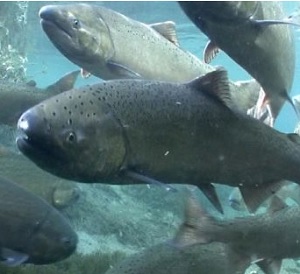 Today, the Department of Commerce and NOAA announced more than $106 million in recommended funding for 16 West Coast and Alaska state and tribal salmon recovery programs and projects under the Pacific Coastal Salmon Recovery Fund (PCSRF). The funds, including $34.4 million under the Bipartisan Infrastructure Law and $7.5 million under the Inflation Reduction Act, will support the recovery, conservation and resilience of Pacific salmon and steelhead in Alaska, California, Idaho, Oregon and Washington. This funding is part of President Biden’s historic Investing in America agenda, which includes over $2 billion for fish passage investments across the country. >click to read< 18:03
Today, the Department of Commerce and NOAA announced more than $106 million in recommended funding for 16 West Coast and Alaska state and tribal salmon recovery programs and projects under the Pacific Coastal Salmon Recovery Fund (PCSRF). The funds, including $34.4 million under the Bipartisan Infrastructure Law and $7.5 million under the Inflation Reduction Act, will support the recovery, conservation and resilience of Pacific salmon and steelhead in Alaska, California, Idaho, Oregon and Washington. This funding is part of President Biden’s historic Investing in America agenda, which includes over $2 billion for fish passage investments across the country. >click to read< 18:03
NOAA Is Rolling Out a Plan to Radically Expand Offshore Aquaculture. Not Everyone Is Onboard
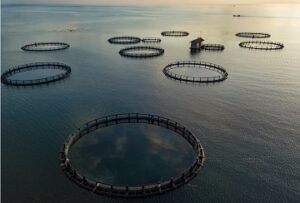 The cardboard gravestones read “RIP Local fisherman,” “RIP Wild Fish,” and “RIP Humpback Whales.” Assembled in response to new aquaculture sites planned off the coast of California, the gravestones were brought to the offices of the National Oceanic and Atmospheric Administration (NOAA) in Long Beach, California, in April by activists keen to register their discontent. The sites pave the way for possibly dozens of new open-pen fish farms as far as three miles offshore, the future home of species that range from carp to salmon. Chief among the protesters’ concerns were entanglement of marine mammals, the expansion of dead zones caused by fish excrement, and infringement on wild fishing grounds. >click to read< 09:07
The cardboard gravestones read “RIP Local fisherman,” “RIP Wild Fish,” and “RIP Humpback Whales.” Assembled in response to new aquaculture sites planned off the coast of California, the gravestones were brought to the offices of the National Oceanic and Atmospheric Administration (NOAA) in Long Beach, California, in April by activists keen to register their discontent. The sites pave the way for possibly dozens of new open-pen fish farms as far as three miles offshore, the future home of species that range from carp to salmon. Chief among the protesters’ concerns were entanglement of marine mammals, the expansion of dead zones caused by fish excrement, and infringement on wild fishing grounds. >click to read< 09:07
30-foot humpback whale found dead on Fire Island
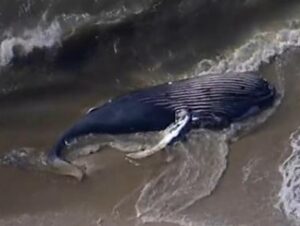 A 30-foot humpback whale was found dead on the shores of Fire Island on Friday morning — at least the 18th doomed humpback discovered on the East Coast so far this year. The tragic majestic mammal was found belly-up on the eastern side of Smith Point County Park in Shirley, Long Island, the National Oceanic and Atmospheric Administration said. The animal’s body has been collected for a necropsy, NOAA told Patch in a statement. The cause of death is unknown. NOAA has deemed the occurrences an “unusual mortality event.” Photos, short vid, >click to read< 18:24
A 30-foot humpback whale was found dead on the shores of Fire Island on Friday morning — at least the 18th doomed humpback discovered on the East Coast so far this year. The tragic majestic mammal was found belly-up on the eastern side of Smith Point County Park in Shirley, Long Island, the National Oceanic and Atmospheric Administration said. The animal’s body has been collected for a necropsy, NOAA told Patch in a statement. The cause of death is unknown. NOAA has deemed the occurrences an “unusual mortality event.” Photos, short vid, >click to read< 18:24
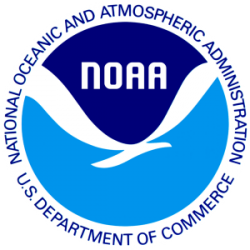
NOAA outlines sweeping plan to boost the nation’s seafood industry
The National Oceanic and Atmospheric Administration has released a sweeping five-year plan to prioritize and promote the country’s commercial fishing industry. NOAA Fisheries announced its National Seafood Strategy on Wednesday. The agency said in a press release that the plan will “outline the direction” of the country’s seafood sector. It’s the first time NOAA has released an overall strategy aimed at addressing industry needs – the agency says it will complement other federal policies that are already in place. >click to read< 11:29






